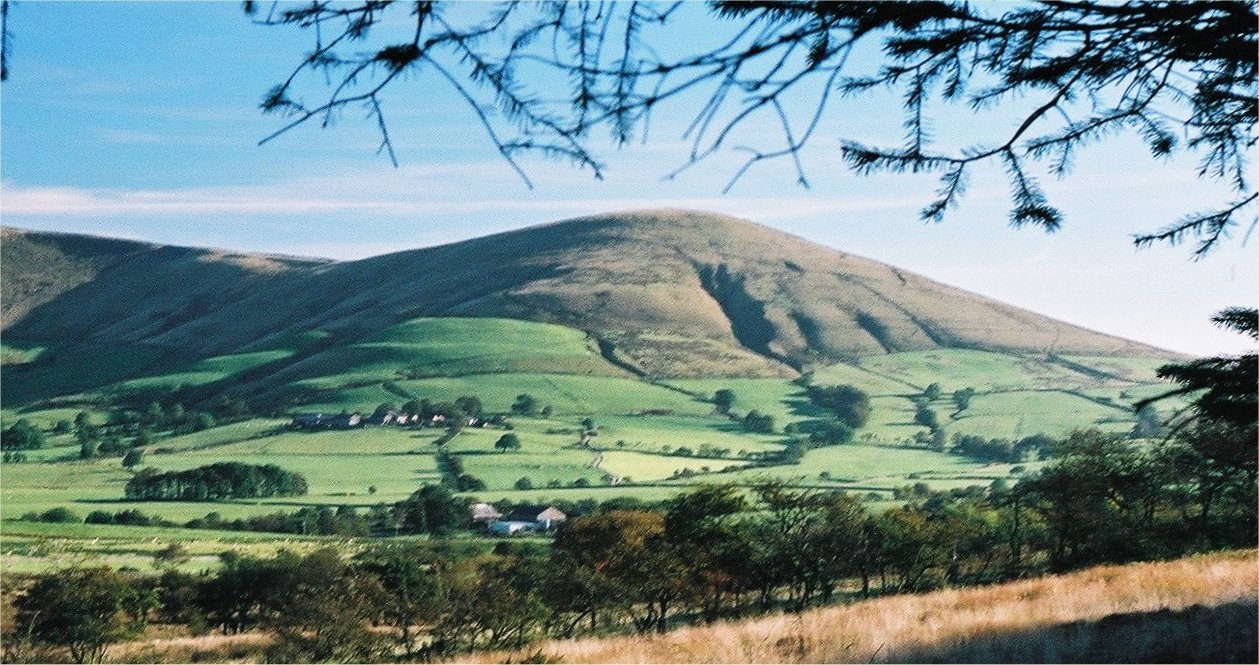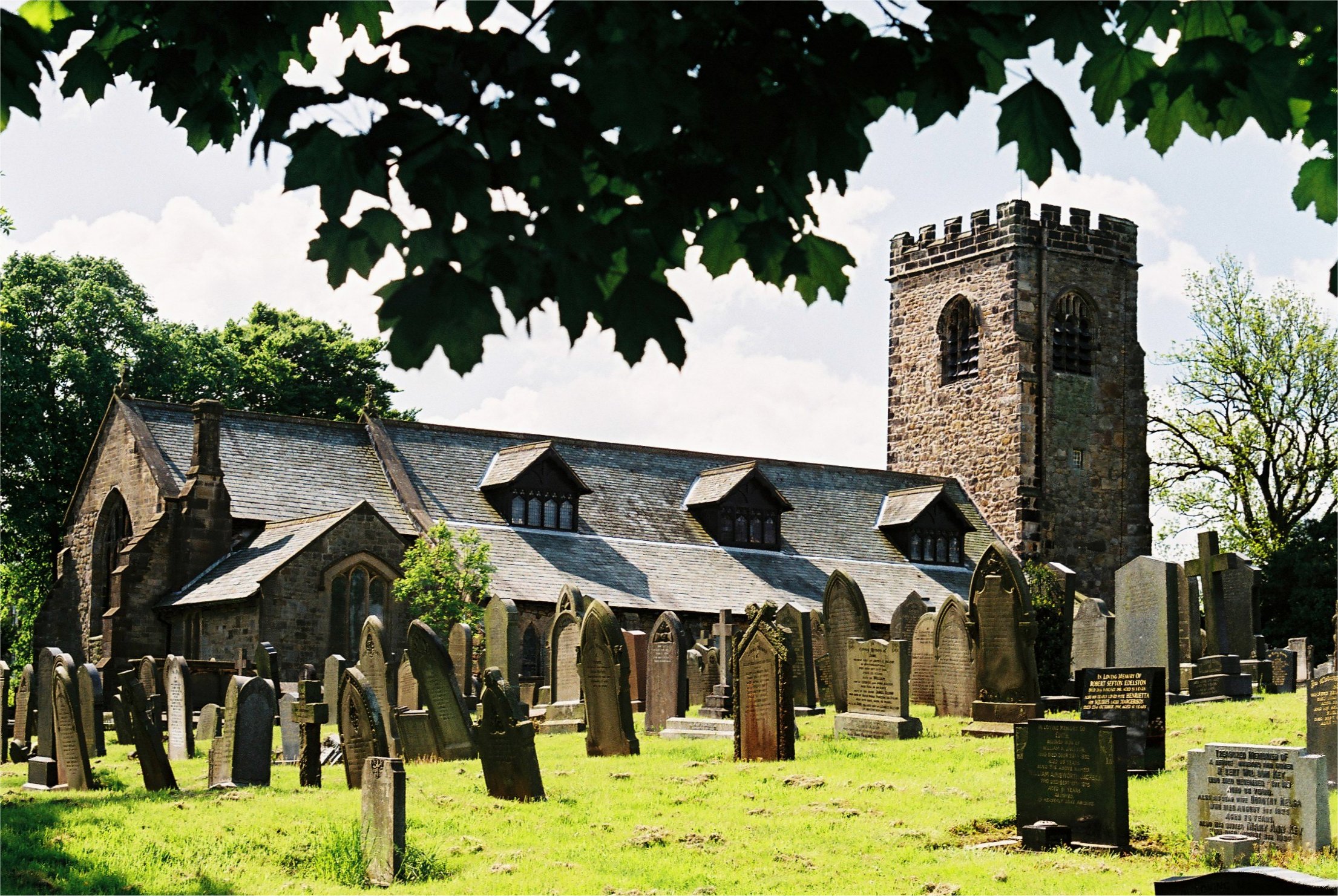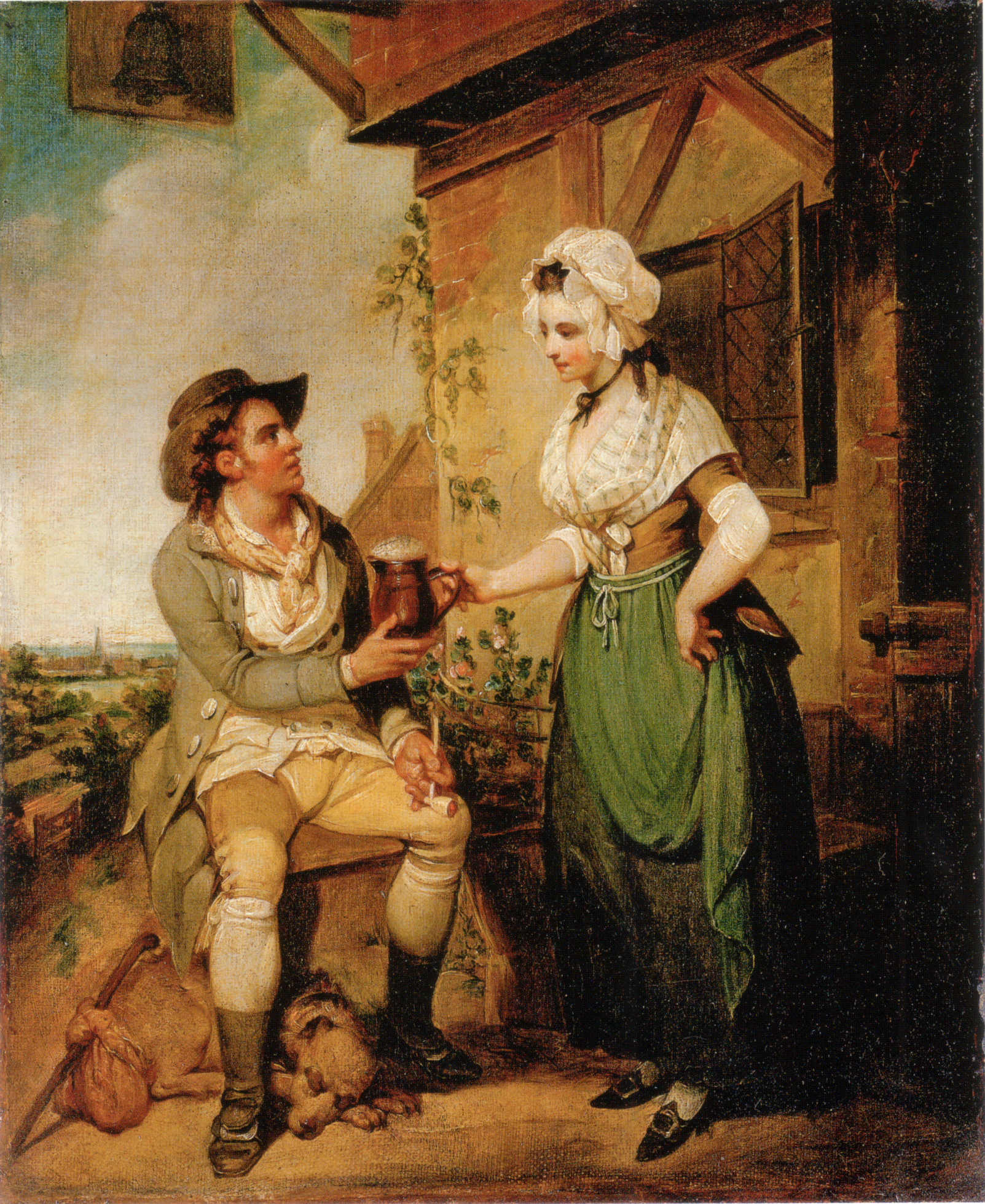|
Ye Horn's Inn
Ye Horns Inn is a restaurant and public house at Horns Lane in Goosnargh parish near Preston, Lancashire, England. Located near the Forest of Bowland, Ye Horns Inn has welcomed locals and travellers alike over the years. Originally a coaching inn called the Buck Horns, dating back to 1782, it was originally part of a working farm. During the inter-war period the interior was partially refitted which coincided with render and mock timber being applied to the exterior. This, and the creation of dining rooms, is thought to be an attempt to provide an "improved" pub, popular at the time and stemming from a desire to cut back on the amount of drunkenness associated with conventional Victorian and Edwardian public houses. Fast forward a few decades and the building was granted a Grade II listing in January 2017 based on its architectural value and the retention of the pub’s interior. Its distinctive characteristics, prior to renovation 2018–2022, earned it a listing on the Cam ... [...More Info...] [...Related Items...] OR: [Wikipedia] [Google] [Baidu] |
Public House
A pub (short for public house) is a kind of drinking establishment which is licensed to serve alcoholic drinks for consumption on the premises. The term ''public house'' first appeared in the United Kingdom in late 17th century, and was used to differentiate private houses from those which were, quite literally, open to the public as "alehouses", "taverns" and "inns". By Georgian times, the term had become common parlance, although taverns, as a distinct establishment, had largely ceased to exist by the beginning of the 19th century. Today, there is no strict definition, but CAMRA states a pub has four characteristics:GLA Economics, Closing time: London's public houses, 2017 # is open to the public without membership or residency # serves draught beer or cider without requiring food be consumed # has at least one indoor area not laid out for meals # allows drinks to be bought at a bar (i.e., not only table service) The history of pubs can be traced to Roman taverns in B ... [...More Info...] [...Related Items...] OR: [Wikipedia] [Google] [Baidu] |
Restaurant
A restaurant is a business that prepares and serves food and drinks to customers. Meals are generally served and eaten on the premises, but many restaurants also offer take-out and food delivery services. Restaurants vary greatly in appearance and offerings, including a wide variety of cuisines and service models ranging from inexpensive fast-food restaurants and cafeterias to mid-priced family restaurants, to high-priced luxury establishments. Etymology The word derives from early 19th century from French word 'provide food for', literally 'restore to a former state' and, being the present participle of the verb, The term ''restaurant'' may have been used in 1507 as a "restorative beverage", and in correspondence in 1521 to mean 'that which restores the strength, a fortifying food or remedy'. History A public eating establishment similar to a restaurant is mentioned in a 512 BC record from Ancient Egypt. It served only one dish, a plate of cereal, wild fowl, and o ... [...More Info...] [...Related Items...] OR: [Wikipedia] [Google] [Baidu] |
Goosnargh
Goosnargh ( ) is a village and civil parish in the City of Preston district of Lancashire, England. The village lies between Broughton and Longridge, and mostly lies in the civil parish of Whittingham, although the ancient centre lies in the civil parish of Goosnargh. The parish of Goosnargh had a population of 1,204 recorded in the 2001 census, increasing to 1,316 at the 2011 Census. The village population in 2011 was 1,072. Toponymy The name, meaning "Gosan's or Gusan's hill pasture", derives from Gosan or Gusan (an Old Irish personal name) and ''erg'' ( Norse for "hill pasture"). The name appeared in the Domesday Book as ''Gusansarghe'' but by 1212 had changed to ''Gosenargh'', closer to today's pronunciation. However, one reference suggested ''Gusansarghe'' was from Old Norse ''gudhsins hörgi'' (related to ''hörgr''), meaning "at the idol's (god's) temple." Goosnargh village The Anglican parish church of St Mary the Virgin is situated on Church Lane. Trinity Meth ... [...More Info...] [...Related Items...] OR: [Wikipedia] [Google] [Baidu] |
Preston, Lancashire
Preston () is a city on the north bank of the River Ribble in Lancashire, England. The city is the administrative centre of the county of Lancashire and the wider City of Preston local government district. Preston and its surrounding district obtained city status in 2002, becoming England's 50th city in the 50th year of Queen Elizabeth II's reign. Preston has a population of 114,300, the City of Preston district 132,000 and the Preston Built-up Area 313,322. The Preston Travel To Work Area, in 2011, had a population of 420,661, compared with 354,000 in the previous census. Preston and its surrounding area have provided evidence of ancient Roman activity, largely in the form of a Roman road that led to a camp at Walton-le-Dale. The Angles established Preston; its name is derived from the Old English meaning "priest's settlement" and in the ''Domesday Book'' is recorded as "Prestune". In the Middle Ages, Preston was a parish and township in the hundred of Amounderness an ... [...More Info...] [...Related Items...] OR: [Wikipedia] [Google] [Baidu] |
Public House
A pub (short for public house) is a kind of drinking establishment which is licensed to serve alcoholic drinks for consumption on the premises. The term ''public house'' first appeared in the United Kingdom in late 17th century, and was used to differentiate private houses from those which were, quite literally, open to the public as "alehouses", "taverns" and "inns". By Georgian times, the term had become common parlance, although taverns, as a distinct establishment, had largely ceased to exist by the beginning of the 19th century. Today, there is no strict definition, but CAMRA states a pub has four characteristics:GLA Economics, Closing time: London's public houses, 2017 # is open to the public without membership or residency # serves draught beer or cider without requiring food be consumed # has at least one indoor area not laid out for meals # allows drinks to be bought at a bar (i.e., not only table service) The history of pubs can be traced to Roman taverns in B ... [...More Info...] [...Related Items...] OR: [Wikipedia] [Google] [Baidu] |
Forest Of Bowland
The Forest of Bowland, also known as the Bowland Fells and formerly the Chase of Bowland, is an area of gritstone fells, deep valleys and peat moorland, mostly in north-east Lancashire, England, with a small part in North Yorkshire (however roughly half of the area falls into the area of the historic West Riding of Yorkshire). It is a western outlier of the Pennines. The Forest of Bowland was designated an Area of Outstanding Natural Beauty (AONB) in 1964. The AONB also includes a detached part known as the Forest of Pendle separated from the main part by the Ribble Valley, and anciently a royal forest with its own separate history. One of the best-known features of the area is Pendle Hill, which lies in Pendle Forest. There are more than 500 listed buildings and 18 scheduled monuments within the AONB. The Trough of Bowland is a pass connecting the valley of the Marshaw Wyre with that of Langden Brook, and dividing the upland core of Bowland into two main blocks. The hills ... [...More Info...] [...Related Items...] OR: [Wikipedia] [Google] [Baidu] |
Listed Building
In the United Kingdom, a listed building or listed structure is one that has been placed on one of the four statutory lists maintained by Historic England in England, Historic Environment Scotland in Scotland, in Wales, and the Northern Ireland Environment Agency in Northern Ireland. The term has also been used in the Republic of Ireland, where buildings are protected under the Planning and Development Act 2000. The statutory term in Ireland is " protected structure". A listed building may not be demolished, extended, or altered without special permission from the local planning authority, which typically consults the relevant central government agency, particularly for significant alterations to the more notable listed buildings. In England and Wales, a national amenity society must be notified of any work to a listed building which involves any element of demolition. Exemption from secular listed building control is provided for some buildings in current use for worship, ... [...More Info...] [...Related Items...] OR: [Wikipedia] [Google] [Baidu] |
Campaign For Real Ale
The Campaign for Real Ale (CAMRA) is an independent voluntary consumer organisation headquartered in St Albans, England, which promotes real ale, cider and perry and traditional British pubs and clubs. With just under 155,000 members, it is the largest single-issue consumer group in the UK, and is a founding member of the European Beer Consumers Union (EBCU). History The organisation was founded on 16 March 1971 in Kruger's Bar, Dunquin, Kerry, Ireland, by Michael Hardman, Graham Lees, Jim Makin, and Bill Mellor, who were opposed to the growing mass production of beer and the homogenisation of the British brewing industry. The original name was the Campaign for the Revitalisation of Ale. Following the formation of the Campaign, the first annual general meeting took place in 1972, at the Rose Inn in Coton Road, Nuneaton. Early membership consisted of the four founders and their friends. Interest in CAMRA and its objectives spread rapidly, with 5,000 members signed up by 197 ... [...More Info...] [...Related Items...] OR: [Wikipedia] [Google] [Baidu] |
National Inventory Of Historic Pub Interiors
The National Inventory of Historic Pub Interiors is a register of public houses in the United Kingdom with interiors which have been noted as being of significant historic interest, having remained largely unchanged for at least 30 years, but usually since at least World War II. The National Inventory was begun by (and is maintained by) the Campaign for Real Ale as part of that organisation's mission to protect Britain's pub heritage as well as good beer. CAMRA is an independent, voluntary, consumer organisation based in St Albans, England, whose main aims are promoting real ale and the traditional British pub. It is now the largest single-issue consumer group in the UK. Within CAMRA, the "Pub Heritage Group" is established to identify, record and help protect public house interiors of historic and/or architectural importance, and seeks to get them listed, if they are not already. The group maintains two inventories of "Heritage pubs", the National Inventory (NI) and the Regional ... [...More Info...] [...Related Items...] OR: [Wikipedia] [Google] [Baidu] |
Listed Buildings In Goosnargh
Goosnargh is a civil parish in the City of Preston, Lancashire, England. It contains 49 listed buildings that are recorded in the National Heritage List for England. Of these, four are at Grade II*, the middle grade, and the others are at Grade II, the lowest grade. The parish contains the villages of Inglewhite and Whitechapel, and part of the village of Goosnargh Goosnargh ( ) is a village and civil parish in the City of Preston district of Lancashire, England. The village lies between Broughton and Longridge, and mostly lies in the civil parish of Whittingham, although the ancient centre lies in ..., but is otherwise completely rural. The listed buildings are mainly houses and associated structures, farmhouses, and farm buildings. The other listed buildings include churches, cross bases, sundials, a public house, and a school. Key Buildings References ;Citations ;Sources * * * * * * * * * * * * * * * * * * * * * * * * * * * * * * * * * * * * ... [...More Info...] [...Related Items...] OR: [Wikipedia] [Google] [Baidu] |
National Inventory Pubs
The National Inventory of Historic Pub Interiors is a register of public houses in the United Kingdom with interiors which have been noted as being of significant historic interest, having remained largely unchanged for at least 30 years, but usually since at least World War II. The National Inventory was begun by (and is maintained by) the Campaign for Real Ale as part of that organisation's mission to protect Britain's pub heritage as well as good beer. CAMRA is an independent, voluntary, consumer organisation based in St Albans, England, whose main aims are promoting real ale and the traditional British pub. It is now the largest single-issue consumer group in the UK. Within CAMRA, the "Pub Heritage Group" is established to identify, record and help protect public house interiors of historic and/or architectural importance, and seeks to get them listed, if they are not already. The group maintains two inventories of "Heritage pubs", the National Inventory (NI) and the Regional ... [...More Info...] [...Related Items...] OR: [Wikipedia] [Google] [Baidu] |
Pubs In Lancashire
A pub (short for public house) is a kind of drinking establishment which is licensed to serve alcoholic drinks for consumption on the premises. The term ''public house'' first appeared in the United Kingdom in late 17th century, and was used to differentiate private houses from those which were, quite literally, open to the public as "alehouses", "taverns" and "inns". By Georgian times, the term had become common parlance, although taverns, as a distinct establishment, had largely ceased to exist by the beginning of the 19th century. Today, there is no strict definition, but CAMRA states a pub has four characteristics:GLA Economics, Closing time: London's public houses, 2017 # is open to the public without membership or residency # serves draught beer or cider without requiring food be consumed # has at least one indoor area not laid out for meals # allows drinks to be bought at a bar (i.e., not only table service) The history of pubs can be traced to Roman taverns in B ... [...More Info...] [...Related Items...] OR: [Wikipedia] [Google] [Baidu] |







.jpg)

